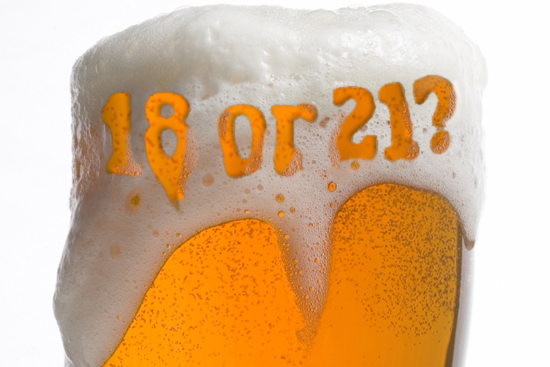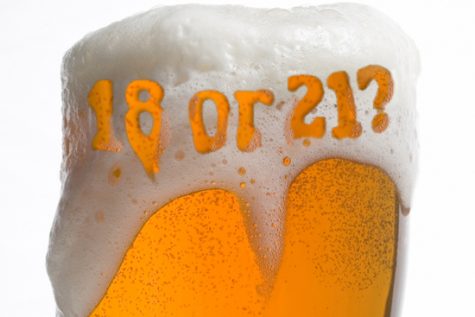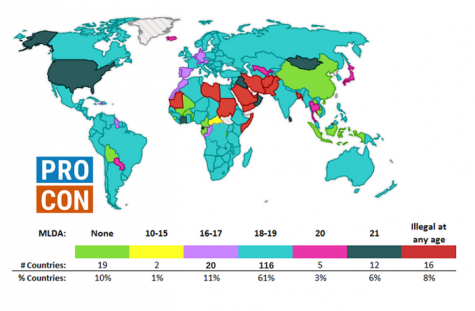Is it Time for the U.S. to Lower the Drinking Age?

A very controversial, much discussed topic has been haunting our legislators: Is the drinking age set too high? Should we trust our 18 year-olds to drink? Two generations of younger Americans have never known any drinking minimum age to be less than 21, which some would say is too high. The current system, which forbids the purchase and consumption of alcoholic beverages to Americans under 21, is widely flouted, with disastrous consequences. Nowadays, high school and college kids view dangerous binge drinking as a rite of passage.
 In the 1970s, however, things were very different. After Congress in 1971 dropped the voting age from 21 to 18, many states followed suit by lowering the barriers to drinking as well, because: “If young Americans could be entrusted to vote, serve on a jury and fight in Vietnam, why couldn’t they order a beer?” By the late 1970s, more than half the states in the U.S. had lowered their minimum drinking ages. But when research showed an increase in traffic fatalities in these states (in large part with teenage victims), Congress chose to restore the previous drinking age conditions. The current law, passed in all 50 states in 1984, was intended to diminish the number of traffic deaths caused by young drunk drivers. It has succeeded in that, but it is evident that today’s law encourages young people to dodge the system. Indeed, the drinking age hasn’t reduced drinking — it has simply driven it underground, to riskier settings such as unsupervised high school and fraternity parties.
In the 1970s, however, things were very different. After Congress in 1971 dropped the voting age from 21 to 18, many states followed suit by lowering the barriers to drinking as well, because: “If young Americans could be entrusted to vote, serve on a jury and fight in Vietnam, why couldn’t they order a beer?” By the late 1970s, more than half the states in the U.S. had lowered their minimum drinking ages. But when research showed an increase in traffic fatalities in these states (in large part with teenage victims), Congress chose to restore the previous drinking age conditions. The current law, passed in all 50 states in 1984, was intended to diminish the number of traffic deaths caused by young drunk drivers. It has succeeded in that, but it is evident that today’s law encourages young people to dodge the system. Indeed, the drinking age hasn’t reduced drinking — it has simply driven it underground, to riskier settings such as unsupervised high school and fraternity parties.
A 2009 study published in The Journal of Studies on Alcohol and Drugs found that between 1998 and 2005, the number of cases of alcohol poisoning deaths among 18- to 24-year-olds nearly tripled, jumping from 779 cases to 2,290. This should be a wake-up call for the country to start teaching people to drink responsibly from a young age, which would enormously improve public health. Clearly, this kind of education can only result from moderate models, at home, at school, and in alcohol education programs.
The United States is one of only 12 countries where the legal drinking age is 21, compared to the 116 countries in which you can drink at 18. This substantial numerical difference is due to the fact that, in several parts of the world, it has been proved that teenagers are less likely to rush and surrender to binge drinking if they can start consuming alcohol at a younger age. From my perspective, growing up in Italy where the minimum drinking age is 18, people that age for the most part show a responsible consumption of alcoholic beverages, since they were raised to be careful but also comfortable when it comes to drinking.
American 18-year-olds have the right to vote, marry, buy guns and join the military. They are ready to defend their country, decide elected officials and serve on a jury. They are considered fully-fledged adults, therefore they deserve the chance to learn to make their own choices responsibly.


Laura is an exchange student from Italy. She just turned eighteen and is in her senior year. Laura enjoys photography, traveling, dancing and reading....







